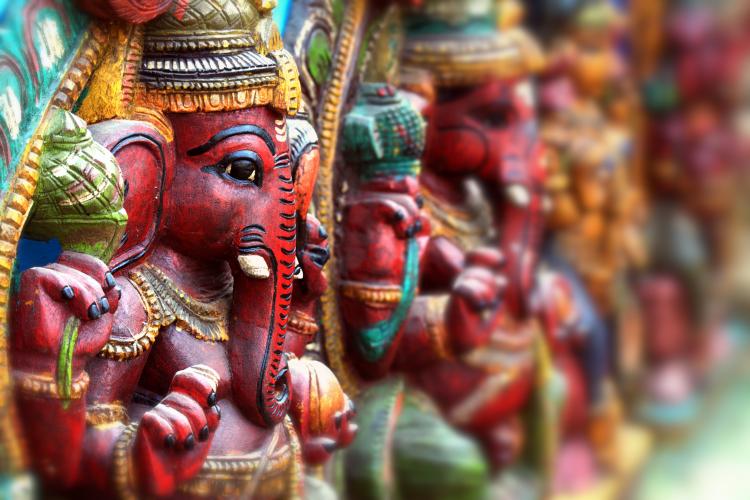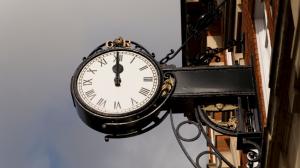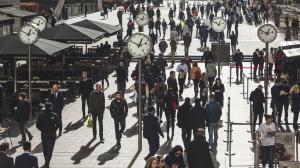
Best Comet of 2025?
C/2024 G3 (ATLAS) has already become very faintly visible to the naked eye for observers in the Southern Hemisphere.
Ganesh Chaturthi is a festival that celebrates the birthday of Lord Ganesha, the Hindu god of wisdom and success. It is also known as Vinayaka Chaturthi and can last up to 10 days during the Hindu Month of Bhadra, which usually falls between mid-August and mid-September.

This festival celebrates the birthday of Lord Ganesha.
©iStockphoto.com/Murali Nath
Artistic clay models of Lord Ganesha that range from 3/4" of an inch to over 25 feet tall are made two to three months prior to the festival. Many of these statues are put into specially made mandapas or pandals that are decorated with flower garlands and lights so that they can be displayed inside homes. Many Hindus attend temple on this day and offer Lord Ganesha coconut and sweet pudding.
The festival includes many public activities such as local communities competing to put up the biggest statue and best pandal of Lord Ganesha, cultural activities such as singing, art presentations, yoga demonstrations, music and theater performance, as well as community services such as free medical check-ups, blood donations, and charities for the poor.
Lord Ganesha is worshipped for ten days, and on the 11th day after the final offering of coconuts, flowers and camphor are made, a procession accompanied with dancing and singing is taken through the streets with people carrying the images and statues of Ganesha. The idol is immersed into the river or sea to symbolize Lord Ganesha’s journey back to his home in Kailash and taking with him all of the misfortunes of man.
Ganesha Chaturthi is a gazetted holiday in some countries so government offices and many businesses may be closed. It is a restricted holiday in India so government offices and most businesses remain open. Individuals have the flexibility to take time off to celebrate the holiday if they choose. It is not a nationwide public holiday in countries such as Australia, Canada, the United Kingdom, and the United States but some cities may hold large celebrations for the occasion.
Ganesha Chaturthi is a major traditional Hindu festival that celebrates the birthday of Lord Ganesh, the elephant-headed son o f Shiva (the God of Destruction) and Parvati. Lord Ganesha is widely worshiped as the god of wisdom, prosperity, and good fortune. It is believed that Lord Ganesha was born on a fourth day (chaturthi) of the fortnight of the Hindu lunar month of Magh, thus making a festival dedicated to the worship of Lord Ganesha to be named Ganesha Chaturthi.
Indian freedom fighter and social reformer Lokmanya Tilak transformed the annual festival into a large, well-organized public event after 1893. Tilak encouraged the installation of large public images of Lord Ganesha in pavilions, and also established the practice of submerging all public images of the deity into rivers, seas, or other pools of water. Tilak's support of the festival facilitated community participation and involvement. It served as a meeting ground for people of all communities and began many community activities such as intellectual discourses, poetry recitals, performances of plays, musical concerts, and folk dances.
The statues of Ganesha are made in various poses. Lord Ganesha has the head of an elephant, four podgy hands joined to a large belly with each hand holding its own symbolic object. Lord Ganesha holds a trishul or trident in one hand to punish, an ankush or goad (made from his very own broken tooth) in another to control the mind, a lotus in the third to bless the well-being of humanity, and a rosary (which is sometimes replaced by modaks, his favorite sweet) in the fourth for happiness. Some say that his large ears signify listening to God, while his large forehead is to develop great intellect. His large stomach shows his capacity to empathize with the troubles of devotees, while his long trunk symbolizes his deep scriptural wisdom.

C/2024 G3 (ATLAS) has already become very faintly visible to the naked eye for observers in the Southern Hemisphere.

How does the 12-hour clock system work? Is midnight 12 am or 12 pm?

Why do many countries set the clocks back and forth an hour twice a year?

Why are there 12 months? How long are they, and what do the month names mean?